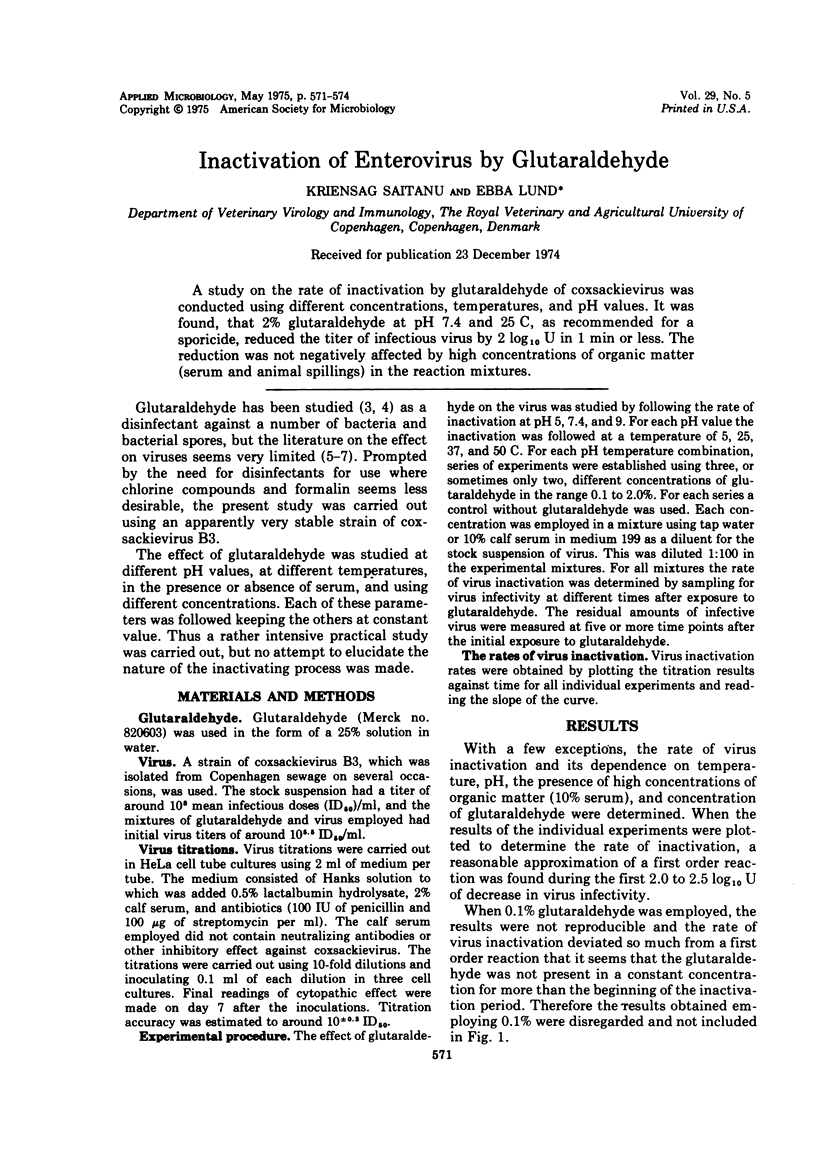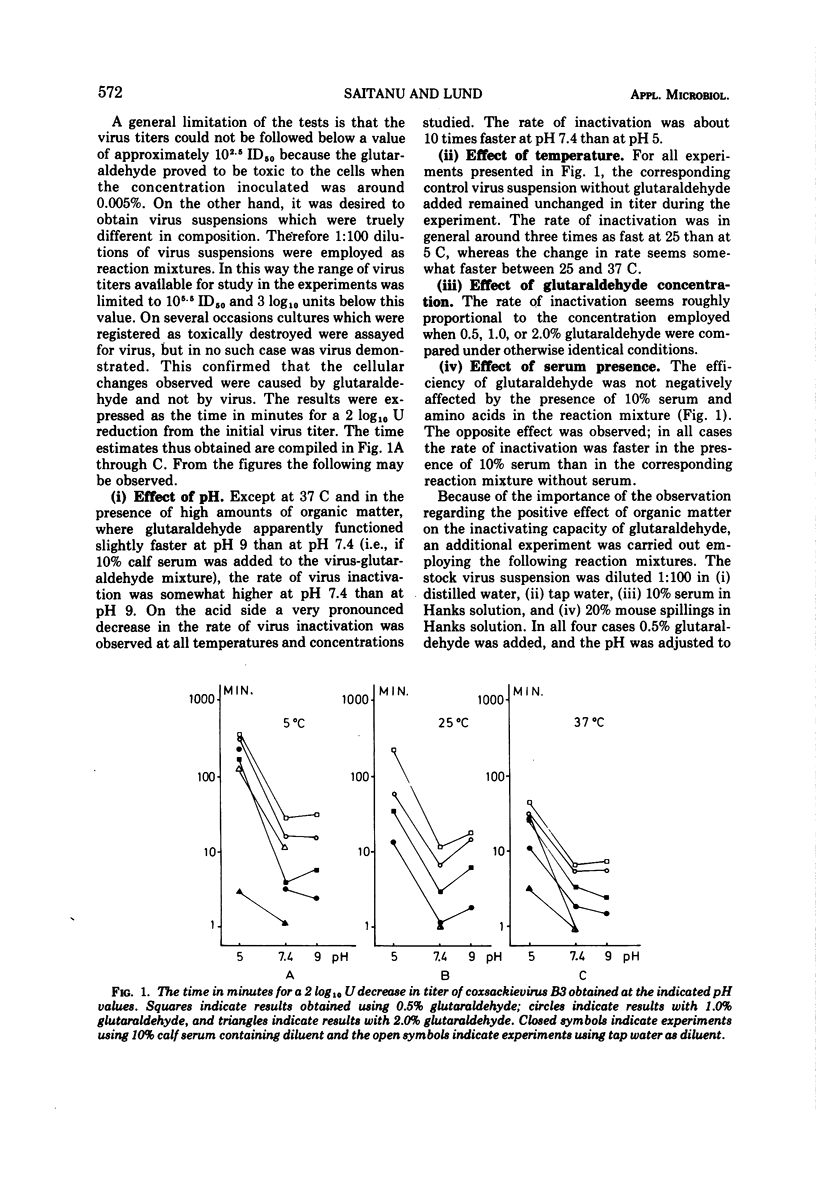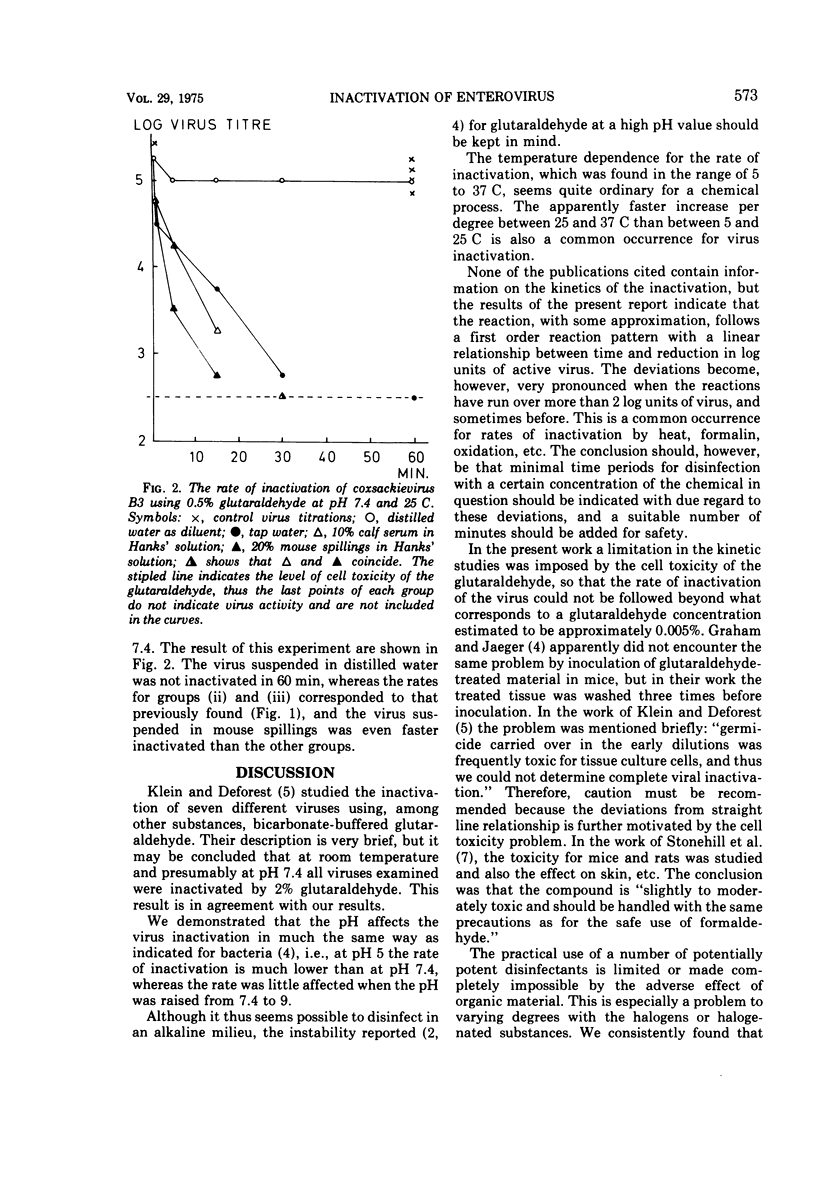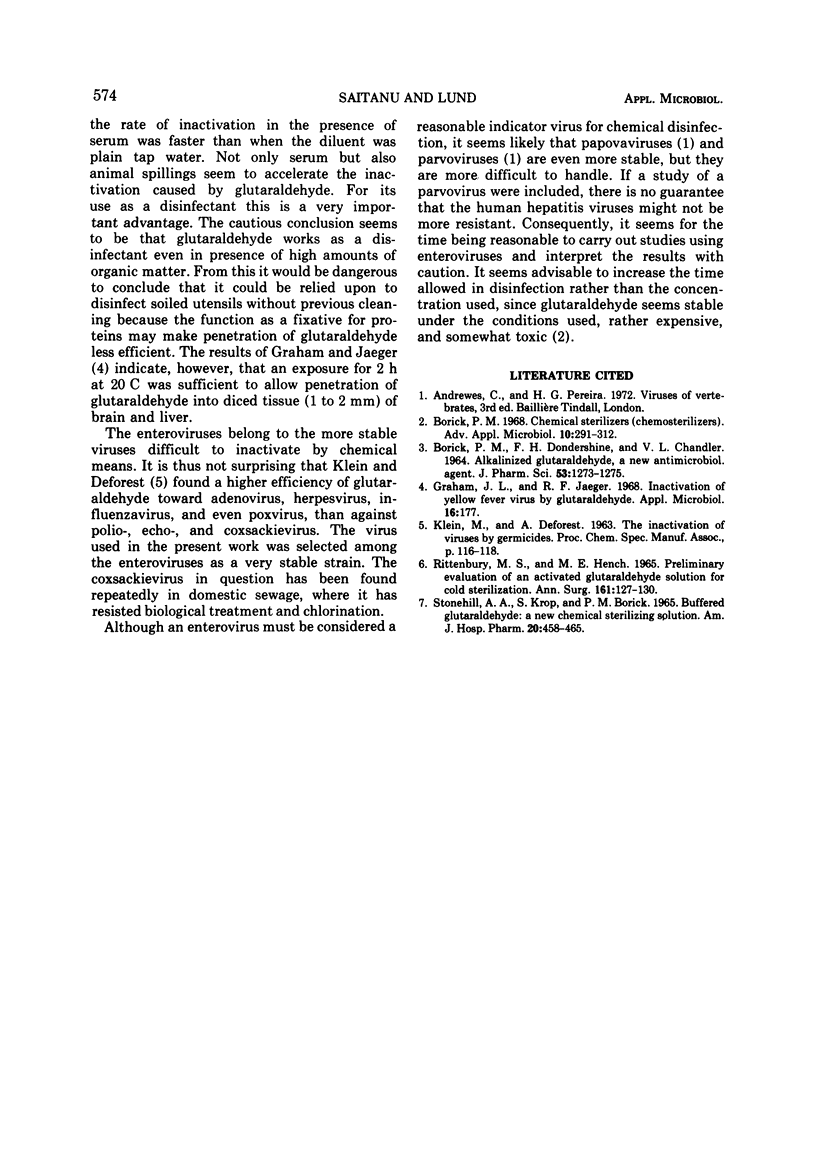Abstract
A study on the rate of inactivation by glutaraldehyde of coxsackievirus was conducted using different concentrations, temperatures, and pH values. It was found, that 2% glutaraldehyde at pH 7.4 and 25 C, as recommended for a sporicide, reduced the titer of infectious virus by 2 log10 U in 1 min or less. The reduction was not negatively affected by high concentrations of organic matter (serum and animal spillings) in the reaction mixtures.
Full text
PDF



Selected References
These references are in PubMed. This may not be the complete list of references from this article.
- BORICK P. M., DONDERSHINE F. H., CHANDLER V. L. ALKALINIZED GLUTARALDEHYDE, A NEW ANTIMICROBIAL AGENT. J Pharm Sci. 1964 Oct;53:1273–1275. doi: 10.1002/jps.2600531041. [DOI] [PubMed] [Google Scholar]
- Borick P. M. Chemical sterilizers (chemosterilizers). Adv Appl Microbiol. 1968;10:291–312. doi: 10.1016/s0065-2164(08)70195-3. [DOI] [PubMed] [Google Scholar]
- Graham J. L., Jaeger R. F. Inactivation of yellow fever virus by glutaraldehyde. Appl Microbiol. 1968 Jan;16(1):177–177. doi: 10.1128/am.16.1.177-.1968. [DOI] [PMC free article] [PubMed] [Google Scholar]
- RITTENBURY M. S., HENCH M. E. PRELIMINARY EVALUATION OF AN ACTIVATED GLUTARALDEHYDE SOLUTION FOR COLD STERILIZATION. Ann Surg. 1965 Jan;161:127–130. doi: 10.1097/00000658-196501000-00020. [DOI] [PMC free article] [PubMed] [Google Scholar]


